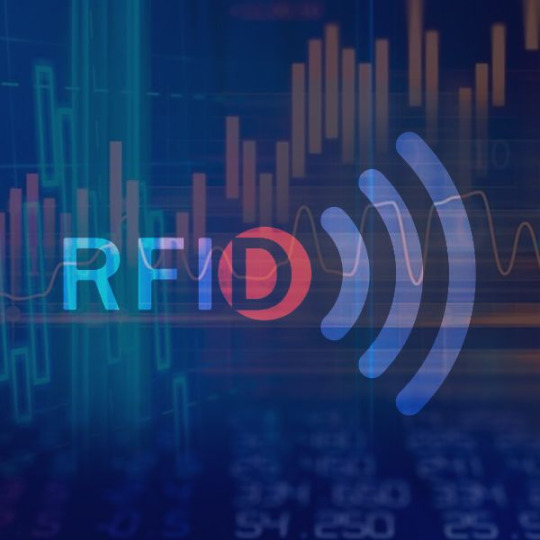#RFIDforEfficiency
Explore tagged Tumblr posts
Text
RTLS and RFID Definitions for Business Process Optimization

1. What Are RFID Definitions? A 2025 Overview for Businesses
The term RFID Definitions refers to the foundational concepts of Radio Frequency Identification. This technology uses radio waves to automatically identify and track items using small electronic tags. In 2025, RFID is widely used across industries—from retail and manufacturing to logistics and catering.
RFID tags store data about the object they are attached to. A reader scans these tags and retrieves the stored data in real-time. This seamless process eliminates manual entry, speeds up workflows, and reduces human error—making it a valuable tool for businesses focused on efficiency.
2. What Is RTLS? Real-Time Location Systems Explained
RTLS, or Real-Time Location Systems, go beyond identification. They allow businesses to track the location of assets or personnel in real time. Unlike RFID, which only identifies an object when it's within the reader’s range, RTLS continuously monitors the movement of tagged items across a mapped area.
By combining RTLS with RFID, businesses gain both identification and precise tracking—helping them monitor inventory, improve safety, and enhance process optimization. Understanding RFID Definitions makes it easier to see how these systems work together.
3. RTLS vs RFID: Key Differences and Business Use Cases
Both RFID and RTLS improve tracking, but they do so in different ways. According to standard RFID Definitions, RFID is used for short-range identification. It’s great for scanning boxes, trays, or pallets as they pass through gates or checkpoints.
RTLS, however, tracks the real-time location of tagged assets or people throughout a facility. RTLS uses technologies like Wi-Fi, Bluetooth, or Ultra-Wideband (UWB) to provide continuous monitoring.
Use cases:
RFID: Asset tagging, stock audits, delivery verification.
RTLS: Staff movement tracking, vehicle routing, equipment usage analytics.
4. Using RFID in Catering: Jaffer Bhai’s Success in Event Logistics
Catering services like Jaffer Bhai’s rely heavily on managing inventory—trays, utensils, food containers, and trolleys. By applying the principles behind RFID Definitions, Jaffer Bhai’s tags each item with RFID chips. This helps them track what leaves the kitchen, what arrives at the venue, and what returns.
RFID allows for instant scanning during loading and unloading. With a quick wave of a handheld reader, staff can confirm if any items are missing, saving time and reducing replacement costs. It also ensures hygiene compliance by tracking cleaning schedules.
5. How RTLS Improves Real-Time Visibility Across Business Operations
RTLS enhances visibility across business operations by giving live updates on the location of assets. For example, in a large catering warehouse, RTLS can show where each food trolley or dish cart is at any given moment.
Understanding RFID Definitions helps companies pair this with location data. Instead of just knowing what item is being used, you now also know where it is. This combination reduces delays, avoids misplacement, and streamlines internal communication.
6. Integrating RTLS & RFID: Smarter Business Process Optimization in 2025
The integration of RTLS and RFID creates a smart, responsive environment. Businesses can use RFID to identify items and RTLS to track their movement. This combination supports full automation of workflows.
For instance, in a catering context:
RFID tags are placed on food containers.
RTLS sensors track their movement inside the prep area.
Data is analyzed to check preparation times and route delays.
This process, based on strong RFID Definitions, leads to faster decisions and better resource allocation.
7. Benefits of RFID Definitions in Warehouse and Catering Environments
When applied properly, RFID Definitions lead to real benefits:
Improved accuracy: Every item is accounted for with precision.
Time savings: Fast scanning means fewer delays.
Inventory control: Easy tracking of what’s available and what’s not.
Reduced losses: Items are harder to misplace.
In catering warehouses, where speed and accuracy are critical, RFID helps manage everything from serving dishes to mobile kitchen gear.
8. Applications of RTLS in Commercial Kitchens and Logistics
In commercial kitchens, RTLS can track equipment like ovens, trolleys, or delivery vehicles. When combined with RFID Definitions, staff can monitor both which asset is in use and where it is.
Examples of RTLS use in catering:
Tracking chef stations during live events.
Monitoring dish movement between prep zones.
Ensuring timely delivery of temperature-sensitive foods.
9. Cost and ROI of Deploying RFID & RTLS in 2025
While deploying RFID and RTLS systems involves an initial investment, the return on investment (ROI) is often high. Based on RFID Definitions, businesses benefit through reduced labor, improved accuracy, and faster turnaround times.
For organizations working with AIDC Technologies India, RFID cuts manual tracking efforts and significantly reduces equipment losses. At the same time, RTLS helps staff quickly locate missing trays, tools, or delivery carts within seconds. These operational improvements result in faster processes and reduced downtime, which directly impact profitability and long-term cost savings.
10. The Future of RFID & RTLS: Smarter, Faster, and More Connected
By 2025, the world of RFID Definitions is rapidly expanding. New advancements include:
Cloud-based RFID data management.
RTLS integration with AI for predictive logistics.
Mobile RFID readers connected to smartphones.
RFID-enabled temperature tracking for perishable goods.
The combination of RTLS and RFID will become a business norm, not a luxury. Catering, healthcare, logistics, and retail will all benefit from these technologies working in tandem.
Call to Action:
Looking to streamline your catering or logistics operations? Get in touch with AIDC Technologies India today to implement advanced RTLS and RFID systems tailored to your business needs.
#RTLS#RFIDDefinitions#BusinessProcessOptimization#SmartTracking2025#RTLSinBusiness#RFIDforEfficiency#DigitalTransformation
0 notes